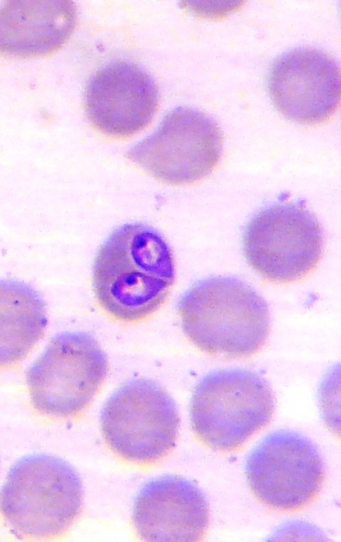Difference between revisions of "Category:Piroplasmida"
Jump to navigation
Jump to search
| (One intermediate revision by one other user not shown) | |||
| Line 4: | Line 4: | ||
The '''piroplasms''' are a group of blood-borne protozoa which are transmitted by [[Ticks|ticks]]. The species of most veterinary importance are ''Babesia'', ''Cytauxzoon'' and ''Theileria''. | The '''piroplasms''' are a group of blood-borne protozoa which are transmitted by [[Ticks|ticks]]. The species of most veterinary importance are ''Babesia'', ''Cytauxzoon'' and ''Theileria''. | ||
| − | Piroplasms are apicomplexan protozoa which inhabit [[Erythrocytes | + | Piroplasms are apicomplexan protozoa which inhabit [[Erythrocytes|erythrocytes]], and sometimes other cells of vertebrates, but do not form pigment from haemoglobin. All piroplasms are small and round or pear-shaped (erythrocyte forms) and are parasitic to fish, amphibians, birds and mammals. |
</div> | </div> | ||
| Line 16: | Line 16: | ||
[[Category:Protozoa]] | [[Category:Protozoa]] | ||
| + | |||
| + | [[Category:To_Do_-_Parasites]] | ||
Latest revision as of 22:17, 26 June 2010
Piroplasmida
The piroplasms are a group of blood-borne protozoa which are transmitted by ticks. The species of most veterinary importance are Babesia, Cytauxzoon and Theileria.
Piroplasms are apicomplexan protozoa which inhabit erythrocytes, and sometimes other cells of vertebrates, but do not form pigment from haemoglobin. All piroplasms are small and round or pear-shaped (erythrocyte forms) and are parasitic to fish, amphibians, birds and mammals.
Pages in category "Piroplasmida"
The following 9 pages are in this category, out of 9 total.
